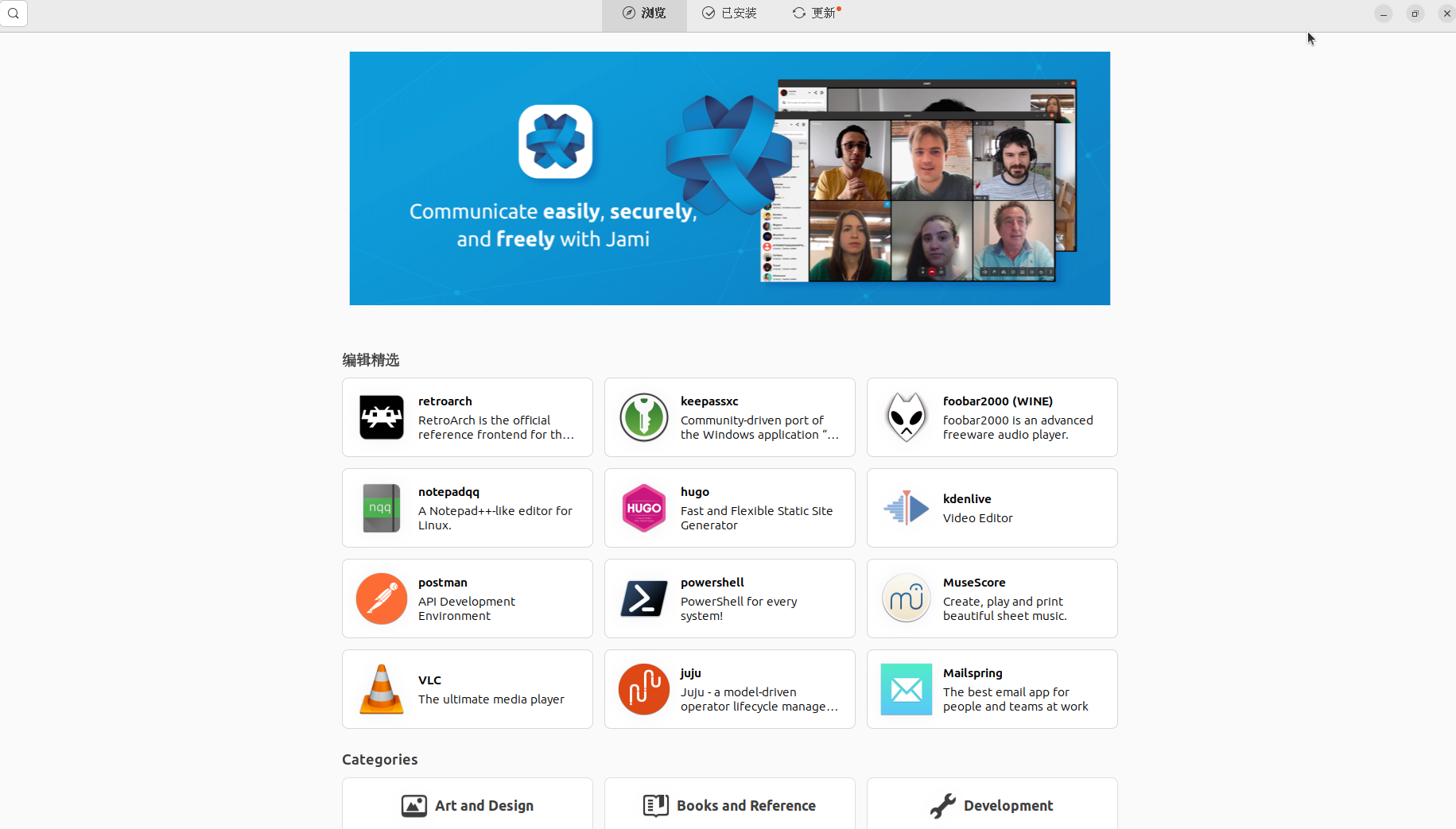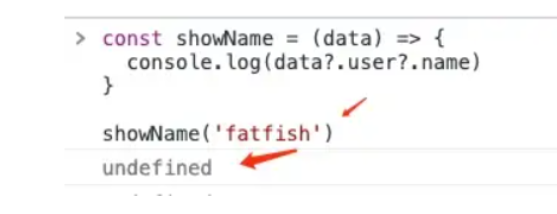SpringBootWeb案例
前面我们已经讲解了Web前端开发的基础知识,也讲解了Web后端开发的基础(HTTP协议、请求响应),并且也讲解了数据库MySQL,以及通过Mybatis框架如何来完成数据库的基本操作。 那接下来,我们就通过一个案例,来将前端开发、后端开发、数据库整合起来。 而这个案例呢,就是我们前面提到的Tlias智能学习辅助系统。

在这个案例中,前端开发人员已经将前端工程开发完毕了。 我们需要做的,就是参考接口文档完成后端功能的开发,然后结合前端工程进行联调测试即可。
完成后的成品效果展示:

今天的主要内容如下:
- 准备工作
- 部门管理
- 员工管理
下面我们就进入到今天的第1个内容准备工作的学习。
1. 准备工作
准备工作的学习,我们先从"需求"和"环境搭建"开始入手。
1.1 需求&环境搭建
1.1.1 需求说明
1、部门管理

部门管理功能开发包括:
- 查询部门列表
- 删除部门
- 新增部门
- 修改部门
2、员工管理

员工管理功能开发包括:
- 查询员工列表(分页、条件)
- 删除员工
- 新增员工
- 修改员工
1.1.2 环境搭建

步骤:
- 准备数据库表(dept、emp)
- 创建springboot工程,引入对应的起步依赖(web、mybatis、mysql驱动、lombok)
- 配置文件application.properties中引入mybatis的配置信息,准备对应的实体类
- 准备对应的Mapper、Service(接口、实现类)、Controller基础结构
第1步:准备数据库表
-- 部门管理
create table dept(id int unsigned primary key auto_increment comment '主键ID',name varchar(10) not null unique comment '部门名称',create_time datetime not null comment '创建时间',update_time datetime not null comment '修改时间'
) comment '部门表';
-- 部门表测试数据
insert into dept (id, name, create_time, update_time) values(1,'学工部',now(),now()),(2,'教研部',now(),now()),(3,'咨询部',now(),now()), (4,'就业部',now(),now()),(5,'人事部',now(),now());-- 员工管理(带约束)
create table emp (id int unsigned primary key auto_increment comment 'ID',username varchar(20) not null unique comment '用户名',password varchar(32) default '123456' comment '密码',name varchar(10) not null comment '姓名',gender tinyint unsigned not null comment '性别, 说明: 1 男, 2 女',image varchar(300) comment '图像',job tinyint unsigned comment '职位, 说明: 1 班主任,2 讲师, 3 学工主管, 4 教研主管, 5 咨询师',entrydate date comment '入职时间',dept_id int unsigned comment '部门ID',create_time datetime not null comment '创建时间',update_time datetime not null comment '修改时间'
) comment '员工表';
-- 员工表测试数据
INSERT INTO emp(id, username, password, name, gender, image, job, entrydate,dept_id, create_time, update_time) VALUES(1,'jinyong','123456','金庸',1,'1.jpg',4,'2000-01-01',2,now(),now()),(2,'zhangwuji','123456','张无忌',1,'2.jpg',2,'2015-01-01',2,now(),now()),(3,'yangxiao','123456','杨逍',1,'3.jpg',2,'2008-05-01',2,now(),now()),(4,'weiyixiao','123456','韦一笑',1,'4.jpg',2,'2007-01-01',2,now(),now()),(5,'changyuchun','123456','常遇春',1,'5.jpg',2,'2012-12-05',2,now(),now()),(6,'xiaozhao','123456','小昭',2,'6.jpg',3,'2013-09-05',1,now(),now()),(7,'jixiaofu','123456','纪晓芙',2,'7.jpg',1,'2005-08-01',1,now(),now()),(8,'zhouzhiruo','123456','周芷若',2,'8.jpg',1,'2014-11-09',1,now(),now()),(9,'dingminjun','123456','丁敏君',2,'9.jpg',1,'2011-03-11',1,now(),now()),(10,'zhaomin','123456','赵敏',2,'10.jpg',1,'2013-09-05',1,now(),now()),(11,'luzhangke','123456','鹿杖客',1,'11.jpg',5,'2007-02-01',3,now(),now()),(12,'hebiweng','123456','鹤笔翁',1,'12.jpg',5,'2008-08-18',3,now(),now()),(13,'fangdongbai','123456','方东白',1,'13.jpg',5,'2012-11-01',3,now(),now()),(14,'zhangsanfeng','123456','张三丰',1,'14.jpg',2,'2002-08-01',2,now(),now()),(15,'yulianzhou','123456','俞莲舟',1,'15.jpg',2,'2011-05-01',2,now(),now()),(16,'songyuanqiao','123456','宋远桥',1,'16.jpg',2,'2007-01-01',2,now(),now()),(17,'chenyouliang','123456','陈友谅',1,'17.jpg',NULL,'2015-03-21',NULL,now(),now());
第2步:创建一个SpringBoot工程,选择引入对应的起步依赖(web、mybatis、mysql驱动、lombok) (版本选择2.7.5版本,可以创建完毕之后,在pom.xml文件中更改版本号)


生成的pom.xml文件:
<?xml version="1.0" encoding="UTF-8"?>
<project xmlns="http://maven.apache.org/POM/4.0.0" xmlns:xsi="http://www.w3.org/2001/XMLSchema-instance"xsi:schemaLocation="http://maven.apache.org/POM/4.0.0 https://maven.apache.org/xsd/maven-4.0.0.xsd"><modelVersion>4.0.0</modelVersion><parent><groupId>org.springframework.boot</groupId><artifactId>spring-boot-starter-parent</artifactId><version>2.7.5</version><relativePath/> </parent><groupId>com.itheima</groupId><artifactId>tlias-web-management</artifactId><version>0.0.1-SNAPSHOT</version><name>tlias-web-management</name><description>Demo project for Spring Boot</description><properties><java.version>11</java.version></properties><dependencies><dependency><groupId>org.springframework.boot</groupId><artifactId>spring-boot-starter-web</artifactId></dependency><dependency><groupId>org.mybatis.spring.boot</groupId><artifactId>mybatis-spring-boot-starter</artifactId><version>2.3.0</version></dependency><dependency><groupId>com.mysql</groupId><artifactId>mysql-connector-j</artifactId><scope>runtime</scope></dependency><dependency><groupId>org.projectlombok</groupId><artifactId>lombok</artifactId><optional>true</optional></dependency><dependency><groupId>org.springframework.boot</groupId><artifactId>spring-boot-starter-test</artifactId><scope>test</scope></dependency></dependencies><build><plugins><plugin><groupId>org.springframework.boot</groupId><artifactId>spring-boot-maven-plugin</artifactId><configuration><excludes><exclude><groupId>org.projectlombok</groupId><artifactId>lombok</artifactId></exclude></excludes></configuration></plugin></plugins></build></project>
创建项目工程目录结构:

第3步:配置文件application.properties中引入mybatis的配置信息,准备对应的实体类
- application.properties (直接把之前项目中的复制过来)
#数据库连接
spring.datasource.driver-class-name=com.mysql.cj.jdbc.Driver
spring.datasource.url=jdbc:mysql://localhost:3306/tlias
spring.datasource.username=root
spring.datasource.password=1234#开启mybatis的日志输出
mybatis.configuration.log-impl=org.apache.ibatis.logging.stdout.StdOutImpl#开启数据库表字段 到 实体类属性的驼峰映射
mybatis.configuration.map-underscore-to-camel-case=true
- 实体类
/*部门类*/
@Data
@NoArgsConstructor
@AllArgsConstructor
public class Dept {private Integer id;private String name;private LocalDateTime createTime;private LocalDateTime updateTime;
}
/*员工类*/
@Data
@NoArgsConstructor
@AllArgsConstructor
public class Emp {private Integer id;private String username;private String password;private String name;private Short gender;private String image;private Short job;private LocalDate entrydate;private Integer deptId;private LocalDateTime createTime;private LocalDateTime updateTime;
}
第4步:准备对应的Mapper、Service(接口、实现类)、Controller基础结构
数据访问层:
- DeptMapper
package com.itheima.mapper;
import org.apache.ibatis.annotations.Mapper;@Mapper
public interface DeptMapper {
}
- EmpMapper
package com.itheima.mapper;
import org.apache.ibatis.annotations.Mapper;@Mapper
public interface EmpMapper {
}业务层:
- DeptService
package com.itheima.service;//部门业务规则
public interface DeptService {
}
- DeptServiceImpl
package com.itheima.service.impl;
import lombok.extern.slf4j.Slf4j;
import org.springframework.stereotype.Service;//部门业务实现类
@Slf4j
@Service
public class DeptServiceImpl implements DeptService {
}
- EmpService
package com.itheima.service;//员工业务规则
public interface EmpService {
}
- EmpServiceImpl
package com.itheima.service.impl;
import com.itheima.service.EmpService;
import lombok.extern.slf4j.Slf4j;
import org.springframework.stereotype.Service;//员工业务实现类
@Slf4j
@Service
public class EmpServiceImpl implements EmpService {}
控制层:
- DeptController
package com.itheima.controller;
import org.springframework.web.bind.annotation.RestController;//部门管理控制器
@RestController
public class DeptController {
}
- EmpController
package com.itheima.controller;
import org.springframework.web.bind.annotation.RestController;//员工管理控制器
@RestController
public class EmpController {
}
项目工程结构:

1.2 开发规范
了解完需求也完成了环境搭建了,我们下面开始学习开发的一些规范。
开发规范我们主要从以下几方面介绍:
1、开发规范-REST
我们的案例是基于当前最为主流的前后端分离模式进行开发。

在前后端分离的开发模式中,前后端开发人员都需要根据提前定义好的接口文档,来进行前后端功能的开发。
后端开发人员:必须严格遵守提供的接口文档进行后端功能开发(保障开发的功能可以和前端对接)
而在前后端进行交互的时候,我们需要基于当前主流的REST风格的API接口进行交互。
什么是REST风格呢?
- REST(Representational State Transfer),表述性状态转换,它是一种软件架构风格。
传统URL风格如下:
http://localhost:8080/user/getById?id=1 GET:查询id为1的用户
http://localhost:8080/user/saveUser POST:新增用户
http://localhost:8080/user/updateUser POST:修改用户
http://localhost:8080/user/deleteUser?id=1 GET:删除id为1的用户
我们看到,原始的传统URL呢,定义比较复杂,而且将资源的访问行为对外暴露出来了。
基于REST风格URL如下:
http://localhost:8080/users/1 GET:查询id为1的用户
http://localhost:8080/users POST:新增用户
http://localhost:8080/users PUT:修改用户
http://localhost:8080/users/1 DELETE:删除id为1的用户
其中总结起来,就一句话:通过URL定位要操作的资源,通过HTTP动词(请求方式)来描述具体的操作。
在REST风格的URL中,通过四种请求方式,来操作数据的增删改查。
- GET : 查询
- POST :新增
- PUT :修改
- DELETE :删除
我们看到如果是基于REST风格,定义URL,URL将会更加简洁、更加规范、更加优雅。
注意事项:
- REST是风格,是约定方式,约定不是规定,可以打破
- 描述模块的功能通常使用复数,也就是加s的格式来描述,表示此类资源,而非单个资源。如:users、emps、books…
2、开发规范-统一响应结果
前后端工程在进行交互时,使用统一响应结果 Result。
package com.itheima.pojo;import lombok.AllArgsConstructor;
import lombok.Data;
import lombok.NoArgsConstructor;@Data
@NoArgsConstructor
@AllArgsConstructor
public class Result {private Integer code;//响应码,1 代表成功; 0 代表失败private String msg; //响应信息 描述字符串private Object data; //返回的数据//增删改 成功响应public static Result success(){return new Result(1,"success",null);}//查询 成功响应public static Result success(Object data){return new Result(1,"success",data);}//失败响应public static Result error(String msg){return new Result(0,msg,null);}
}
3、开发流程
我们在进行功能开发时,都是根据如下流程进行:

-
查看页面原型明确需求
- 根据页面原型和需求,进行表结构设计、编写接口文档(已提供)
-
阅读接口文档
-
思路分析
-
功能接口开发
- 就是开发后台的业务功能,一个业务功能,我们称为一个接口
-
功能接口测试
- 功能开发完毕后,先通过Postman进行功能接口测试,测试通过后,再和前端进行联调测试
-
前后端联调测试
- 和前端开发人员开发好的前端工程一起测试
2. 部门管理
我们按照前面学习的开发流程,开始完成功能开发。首先按照之前分析的需求,完成部门管理的功能开发。
开发的部门管理功能包含:
- 查询部门
- 删除部门
- 新增部门
- 更新部门(不讲解,自己独立完成)
2.1 查询部门
2.1.1 原型和需求

查询的部门的信息:部门ID、部门名称、修改时间
通过页面原型以及需求描述,我们可以看到,部门查询,是不需要考虑分页操作的。
2.1.2 接口文档
部门列表查询
-
基本信息
请求路径:/depts请求方式:GET接口描述:该接口用于部门列表数据查询 -
请求参数
无
-
响应数据
参数格式:application/json
参数说明:
参数名 类型 是否必须 备注 code number 必须 响应码,1 代表成功,0 代表失败 msg string 非必须 提示信息 data object[ ] 非必须 返回的数据 |- id number 非必须 id |- name string 非必须 部门名称 |- createTime string 非必须 创建时间 |- updateTime string 非必须 修改时间 响应数据样例:
{"code": 1,"msg": "success","data": [{"id": 1,"name": "学工部","createTime": "2022-09-01T23:06:29","updateTime": "2022-09-01T23:06:29"},{"id": 2,"name": "教研部","createTime": "2022-09-01T23:06:29","updateTime": "2022-09-01T23:06:29"}] }
2.1.3 思路分析

2.1.4 功能开发
通过查看接口文档:部门列表查询
请求路径:/depts
请求方式:GET
请求参数:无
响应数据:json格式
DeptController
@Slf4j
@RestController
public class DeptController {@Autowiredprivate DeptService deptService;//@RequestMapping(value = "/depts" , method = RequestMethod.GET)@GetMapping("/depts")public Result list(){log.info("查询所有部门数据");List<Dept> deptList = deptService.list();return Result.success(deptList);}
}
@Slf4j注解源码:
DeptService(业务接口)
public interface DeptService {/*** 查询所有的部门数据* @return 存储Dept对象的集合*/List<Dept> list();
}
DeptServiceImpl(业务实现类)
@Slf4j
@Service
public class DeptServiceImpl implements DeptService {@Autowiredprivate DeptMapper deptMapper;@Overridepublic List<Dept> list() {List<Dept> deptList = deptMapper.list();return deptList;}
}
DeptMapper
@Mapper
public interface DeptMapper {//查询所有部门数据@Select("select id, name, create_time, update_time from dept")List<Dept> list();
}
2.1.5 功能测试
功能开发完成后,我们就可以启动项目,然后打开postman,发起GET请求,访问 :http://localhost:8080/depts

2.2 前后端联调
完成了查询部门的功能,我们也通过postman工具测试通过了,下面我们再基于前后端分离的方式进行接口联调。具体操作如下:
1、将资料中提供的"前端环境"文件夹中的压缩包,拷贝到一个没有中文不带空格的目录下

2、拷贝到一个没有中文不带空格的目录后,进行解压(解压到当前目录)

3、启动nginx


4、打开浏览器,访问:http://localhost:90

5、测试:部门管理 - 查询部门列表

说明:只要按照接口文档开发功能接口,就能保证前后端程序交互
- 后端:严格遵守接口文档进行功能接口开发
- 前端:严格遵守接口文档访问功能接口
2.3 删除部门
查询部门的功能我们搞定了,下面我们开始完成删除部门的功能开发。
2.3.1 需求

点击部门列表后面操作栏的 “删除” 按钮,就可以删除该部门信息。 此时,前端只需要给服务端传递一个ID参数就可以了。 我们从接口文档中也可以看得出来。
2.3.2 接口文档
删除部门
-
基本信息
请求路径:/depts/{id}请求方式:DELETE接口描述:该接口用于根据ID删除部门数据 -
请求参数
参数格式:路径参数参数说明:
参数名 类型 是否必须 备注 id number 必须 部门ID 请求参数样例:
/depts/1 -
响应数据
参数格式:application/json参数说明:
参数名 类型 是否必须 备注 code number 必须 响应码,1 代表成功,0 代表失败 msg string 非必须 提示信息 data object 非必须 返回的数据 响应数据样例:
{"code":1,"msg":"success","data":null }
2.3.3 思路分析

接口文档规定:
- 前端请求路径:/depts/{id}
- 前端请求方式:DELETE
问题1:怎么在controller中接收请求路径中的路径参数?
@PathVariable问题2:如何限定请求方式是delete?
@DeleteMapping
2.3.4 功能开发
通过查看接口文档:删除部门
请求路径:/depts/{id}
请求方式:DELETE
请求参数:路径参数 {id}
响应数据:json格式
DeptController
@Slf4j
@RestController
public class DeptController {@Autowiredprivate DeptService deptService;@DeleteMapping("/depts/{id}")public Result delete(@PathVariable Integer id) {//日志记录log.info("根据id删除部门");//调用service层功能deptService.delete(id);//响应return Result.success();}//省略...
}
DeptService
public interface DeptService {/*** 根据id删除部门* @param id 部门id*/void delete(Integer id);//省略...
}
DeptServiceImpl
@Slf4j
@Service
public class DeptServiceImpl implements DeptService {@Autowiredprivate DeptMapper deptMapper;@Overridepublic void delete(Integer id) {//调用持久层删除功能deptMapper.deleteById(id);}//省略...
}
DeptMapper
@Mapper
public interface DeptMapper {/*** 根据id删除部门信息* @param id 部门id*/@Delete("delete from dept where id = #{id}")void deleteById(Integer id);//省略...
}
2.3.5 功能测试
删除功能开发完成后,重新启动项目,使用postman,发起DELETE请求:

2.3.6 前后端联调
打开浏览器,测试后端功能接口:


2.4 新增部门
我们前面已完成了查询部门、删除部门两个功能,也熟悉了开发的流程。下面我们继续完成新增部门功能。
2.4.1 需求

点击 “新增部门” 按钮,弹出新增部门对话框,输入部门名称,点击 “保存” ,将部门信息保存到数据库。
2.4.2 接口文档
添加部门
-
基本信息
请求路径:/depts请求方式:POST接口描述:该接口用于添加部门数据 -
请求参数
格式:application/json
参数说明:
参数名 类型 是否必须 备注 name string 必须 部门名称 请求参数样例:
{"name": "教研部" } -
响应数据
参数格式:application/json
参数说明:
参数名 类型 是否必须 备注 code number 必须 响应码,1 代表成功,0 代表失败 msg string 非必须 提示信息 data object 非必须 返回的数据 响应数据样例:
{"code":1,"msg":"success","data":null }
2.4.3 思路分析
[外链图片转存失败,源站可能有防盗链机制,建议将图片保存下来直接上传(img-rWAHAjIB-1681663580365)(assets/image-20221214115519648.png)]
接口文档规定:
- 前端请求路径:/depts
- 前端请求方式:POST
- 前端请求参数 (Json格式):{ “name”: “教研部” }
问题1:如何限定请求方式是POST?
@PostMapping问题2:怎么在controller中接收json格式的请求参数?
@RequestBody //把前端传递的json数据填充到实体类中
2.4.4 功能开发
通过查看接口文档:新增部门
请求路径:/depts
请求方式:POST
请求参数:json格式
响应数据:json格式
DeptController
@Slf4j
@RestController
public class DeptController {@Autowiredprivate DeptService deptService;@PostMapping("/depts")public Result add(@RequestBody Dept dept){//记录日志log.info("新增部门:{}",dept);//调用service层添加功能deptService.add(dept);//响应return Result.success();}//省略...
}
DeptService
public interface DeptService {/*** 新增部门* @param dept 部门对象*/void add(Dept dept);//省略...
}DeptServiceImpl
@Slf4j
@Service
public class DeptServiceImpl implements DeptService {@Autowiredprivate DeptMapper deptMapper;@Overridepublic void add(Dept dept) {//补全部门数据dept.setCreateTime(LocalDateTime.now());dept.setUpdateTime(LocalDateTime.now());//调用持久层增加功能deptMapper.inser(dept);}//省略...
}DeptMapper
@Mapper
public interface DeptMapper {@Insert("insert into dept (name, create_time, update_time) values (#{name},#{createTime},#{updateTime})")void inser(Dept dept);//省略...
}
2.4.5 功能测试
新增功能开发完成后,重新启动项目,使用postman,发起POST请求:

2.4.6 前后端联调
打开浏览器,测试后端功能接口:


2.4.7 请求路径
我们部门管理的查询、删除、新增功能全部完成了,接下来我们要对controller层的代码进行优化。
首先我们先来看下目前controller层代码:

以上三个方法上的请求路径,存在一个共同点:都是以
/depts作为开头。(重复了)
在Spring当中为了简化请求路径的定义,可以把公共的请求路径,直接抽取到类上,在类上加一个注解@RequestMapping,并指定请求路径"/depts"。代码参照如下:

优化前后的对比:
注意事项:一个完整的请求路径,应该是类上@RequestMapping的value属性 + 方法上的 @RequestMapping的value属性
3. 员工管理
完成了部门管理的功能开发之后,我们进入到下一环节员工管理功能的开发。

基于以上原型,我们可以把员工管理功能分为:
- 分页查询(今天完成)
- 带条件的分页查询(今天完成)
- 删除员工(今天完成)
- 新增员工(后续完成)
- 修改员工(后续完成)
那下面我们就先从分页查询功能开始学习。
3.1 分页查询
3.1.1 基础分页
3.1.1.1 需求分析
我们之前做的查询功能,是将数据库中所有的数据查询出来并展示到页面上,试想如果数据库中的数据有很多(假设有十几万条)的时候,将数据全部展示出来肯定不现实,那如何解决这个问题呢?
使用分页解决这个问题。每次只展示一页的数据,比如:一页展示10条数据,如果还想看其他的数据,可以通过点击页码进行查询。

要想从数据库中进行分页查询,我们要使用LIMIT关键字,格式为:limit 开始索引 每页显示的条数
查询第1页数据的SQL语句是:
select * from emp limit 0,10;查询第2页数据的SQL语句是:
select * from emp limit 10,10;查询第3页的数据的SQL语句是:
select * from emp limit 20,10;观察以上SQL语句,发现: 开始索引一直在改变 , 每页显示条数是固定的
开始索引的计算公式: 开始索引 = (当前页码 - 1) * 每页显示条数
我们继续基于页面原型,继续分析,得出以下结论:
- 前端在请求服务端时,传递的参数
- 当前页码 page
- 每页显示条数 pageSize
- 后端需要响应什么数据给前端
- 所查询到的数据列表(存储到List 集合中)
- 总记录数

后台给前端返回的数据包含:List集合(数据列表)、total(总记录数)
而这两部分我们通常封装到PageBean对象中,并将该对象转换为json格式的数据响应回给浏览器。
@Data @NoArgsConstructor @AllArgsConstructor public class PageBean {private Long total; //总记录数private List rows; //当前页数据列表 }
3.1.1.2 接口文档
员工列表查询
-
基本信息
请求路径:/emps请求方式:GET接口描述:该接口用于员工列表数据的条件分页查询 -
请求参数
参数格式:queryString
参数说明:
参数名称 是否必须 示例 备注 name 否 张 姓名 gender 否 1 性别 , 1 男 , 2 女 begin 否 2010-01-01 范围匹配的开始时间(入职日期) end 否 2020-01-01 范围匹配的结束时间(入职日期) page 是 1 分页查询的页码,如果未指定,默认为1 pageSize 是 10 分页查询的每页记录数,如果未指定,默认为10 请求数据样例:
/emps?name=张&gender=1&begin=2007-09-01&end=2022-09-01&page=1&pageSize=10 -
响应数据
参数格式:application/json
参数说明:
名称 类型 是否必须 默认值 备注 其他信息 code number 必须 响应码, 1 成功 , 0 失败 msg string 非必须 提示信息 data object 必须 返回的数据 |- total number 必须 总记录数 |- rows object [] 必须 数据列表 item 类型: object |- id number 非必须 id |- username string 非必须 用户名 |- name string 非必须 姓名 |- password string 非必须 密码 |- entrydate string 非必须 入职日期 |- gender number 非必须 性别 , 1 男 ; 2 女 |- image string 非必须 图像 |- job number 非必须 职位, 说明: 1 班主任,2 讲师, 3 学工主管, 4 教研主管, 5 咨询师 |- deptId number 非必须 部门id |- createTime string 非必须 创建时间 |- updateTime string 非必须 更新时间 响应数据样例:
{"code": 1,"msg": "success","data": {"total": 2,"rows": [{"id": 1,"username": "jinyong","password": "123456","name": "金庸","gender": 1,"image": "https://web-framework.oss-cn-hangzhou.aliyuncs.com/2022-09-02-00-27-53B.jpg","job": 2,"entrydate": "2015-01-01","deptId": 2,"createTime": "2022-09-01T23:06:30","updateTime": "2022-09-02T00:29:04"},{"id": 2,"username": "zhangwuji","password": "123456","name": "张无忌","gender": 1,"image": "https://web-framework.oss-cn-hangzhou.aliyuncs.com/2022-09-02-00-27-53B.jpg","job": 2,"entrydate": "2015-01-01","deptId": 2,"createTime": "2022-09-01T23:06:30","updateTime": "2022-09-02T00:29:04"}]} }
3.1.1.3 思路分析

分页查询需要的数据,封装在PageBean对象中:

3.1.1.4 功能开发
通过查看接口文档:员工列表查询
请求路径:/emps
请求方式:GET
请求参数:跟随在请求路径后的参数字符串。 例:/emps?page=1&pageSize=10
响应数据:json格式
EmpController
import com.itheima.pojo.PageBean;
import com.itheima.pojo.Result;
import com.itheima.service.EmpService;
import lombok.extern.slf4j.Slf4j;
import org.springframework.beans.factory.annotation.Autowired;
import org.springframework.web.bind.annotation.GetMapping;
import org.springframework.web.bind.annotation.RequestMapping;
import org.springframework.web.bind.annotation.RequestParam;
import org.springframework.web.bind.annotation.RestController;@Slf4j
@RestController
@RequestMapping("/emps")
public class EmpController {@Autowiredprivate EmpService empService;//条件分页查询@GetMappingpublic Result page(@RequestParam(defaultValue = "1") Integer page,@RequestParam(defaultValue = "10") Integer pageSize) {//记录日志log.info("分页查询,参数:{},{}", page, pageSize);//调用业务层分页查询功能PageBean pageBean = empService.page(page, pageSize);//响应return Result.success(pageBean);}
}
@RequestParam(defaultValue=“默认值”) //设置请求参数默认值
EmpService
public interface EmpService {/*** 条件分页查询* @param page 页码* @param pageSize 每页展示记录数* @return*/PageBean page(Integer page, Integer pageSize);
}
EmpServiceImpl
import com.itheima.mapper.EmpMapper;
import com.itheima.pojo.Emp;
import com.itheima.pojo.PageBean;
import com.itheima.service.EmpService;
import lombok.extern.slf4j.Slf4j;
import org.springframework.beans.factory.annotation.Autowired;
import org.springframework.stereotype.Service;
import java.time.LocalDate;
import java.util.List;@Slf4j
@Service
public class EmpServiceImpl implements EmpService {@Autowiredprivate EmpMapper empMapper;@Overridepublic PageBean page(Integer page, Integer pageSize) {//1、获取总记录数Long count = empMapper.count();//2、获取分页查询结果列表Integer start = (page - 1) * pageSize; //计算起始索引 , 公式: (页码-1)*页大小List<Emp> empList = empMapper.list(start, pageSize);//3、封装PageBean对象PageBean pageBean = new PageBean(count , empList);return pageBean;}
}
EmpMapper
@Mapper
public interface EmpMapper {//获取总记录数@Select("select count(*) from emp")public Long count();//获取当前页的结果列表@Select("select * from emp limit #{start}, #{pageSize}")public List<Emp> list(Integer start, Integer pageSize);
}
3.1.1.5 功能测试
功能开发完成后,重新启动项目,使用postman,发起POST请求:

3.1.1.6 前后端联调
打开浏览器,测试后端功能接口:

3.1.2 分页插件
3.1.2.1 介绍
前面我们已经完了基础的分页查询,大家会发现:分页查询功能编写起来比较繁琐。

在Mapper接口中定义两个方法执行两条不同的SQL语句:
- 查询总记录数
- 指定页码的数据列表
在Service当中,调用Mapper接口的两个方法,分别获取:总记录数、查询结果列表,然后在将获取的数据结果封装到PageBean对象中。
大家思考下:在未来开发其他项目,只要涉及到分页查询功能(例:订单、用户、支付、商品),都必须按照以上操作完成功能开发
结论:原始方式的分页查询,存在着"步骤固定"、"代码频繁"的问题
解决方案:可以使用一些现成的分页插件完成。对于Mybatis来讲现在最主流的就是PageHelper。
PageHelper是Mybatis的一款功能强大、方便易用的分页插件,支持任何形式的单标、多表的分页查询。
官网:https://pagehelper.github.io/

在执行empMapper.list()方法时,就是执行:select * from emp 语句,怎么能够实现分页操作呢?
分页插件帮我们完成了以下操作:
- 先获取到要执行的SQL语句:select * from emp
- 把SQL语句中的字段列表,变为:count(*)
- 执行SQL语句:select count(*) from emp //获取到总记录数
- 再对要执行的SQL语句:select * from emp 进行改造,在末尾添加 limit ? , ?
- 执行改造后的SQL语句:select * from emp limit ? , ?
3.1.2.2 代码实现
当使用了PageHelper分页插件进行分页,就无需再Mapper中进行手动分页了。 在Mapper中我们只需要进行正常的列表查询即可。在Service层中,调用Mapper的方法之前设置分页参数,在调用Mapper方法执行查询之后,解析分页结果,并将结果封装到PageBean对象中返回。
1、在pom.xml引入依赖
<dependency><groupId>com.github.pagehelper</groupId><artifactId>pagehelper-spring-boot-starter</artifactId><version>1.4.2</version>
</dependency>
2、EmpMapper
@Mapper
public interface EmpMapper {//获取当前页的结果列表@Select("select * from emp")public List<Emp> page(Integer start, Integer pageSize);
}
3、EmpServiceImpl
@Override
public PageBean page(Integer page, Integer pageSize) {// 设置分页参数PageHelper.startPage(page, pageSize); // 执行分页查询List<Emp> empList = empMapper.list(name,gender,begin,end); // 获取分页结果Page<Emp> p = (Page<Emp>) empList; //封装PageBeanPageBean pageBean = new PageBean(p.getTotal(), p.getResult()); return pageBean;
}
3.1.2.3 测试
功能开发完成后,我们重启项目工程,打开postman,发起GET请求,访问 :http://localhost:8080/emps?page=1&pageSize=5

后端程序SQL输出:
3.2 分页查询(带条件)
完了分页查询后,下面我们需要在分页查询的基础上,添加条件。
3.2.1 需求

通过员工管理的页面原型我们可以看到,员工列表页面的查询,不仅仅需要考虑分页,还需要考虑查询条件。 分页查询我们已经实现了,接下来,我们需要考虑在分页查询的基础上,再加上查询条件。
我们看到页面原型及需求中描述,搜索栏的搜索条件有三个,分别是:
- 姓名:模糊匹配
- 性别:精确匹配
- 入职日期:范围匹配
select *
from emp
where name like concat('%','张','%') -- 条件1:根据姓名模糊匹配and gender = 1 -- 条件2:根据性别精确匹配and entrydate = between '2000-01-01' and '2010-01-01' -- 条件3:根据入职日期范围匹配
order by update_time desc;
而且上述的三个条件,都是可以传递,也可以不传递的,也就是动态的。 我们需要使用前面学习的Mybatis中的动态SQL 。
3.2.2 思路分析

3.2.3 功能开发
通过查看接口文档:员工列表查询
请求路径:/emps
请求方式:GET
请求参数:
参数名称 是否必须 示例 备注 name 否 张 姓名 gender 否 1 性别 , 1 男 , 2 女 begin 否 2010-01-01 范围匹配的开始时间(入职日期) end 否 2020-01-01 范围匹配的结束时间(入职日期) page 是 1 分页查询的页码,如果未指定,默认为1 pageSize 是 10 分页查询的每页记录数,如果未指定,默认为10
在原有分页查询的代码基础上进行改造:
EmpController
@Slf4j
@RestController
@RequestMapping("/emps")
public class EmpController {@Autowiredprivate EmpService empService;//条件分页查询@GetMappingpublic Result page(@RequestParam(defaultValue = "1") Integer page,@RequestParam(defaultValue = "10") Integer pageSize,String name, Short gender,@DateTimeFormat(pattern = "yyyy-MM-dd") LocalDate begin,@DateTimeFormat(pattern = "yyyy-MM-dd") LocalDate end) {//记录日志log.info("分页查询,参数:{},{},{},{},{},{}", page, pageSize,name, gender, begin, end);//调用业务层分页查询功能PageBean pageBean = empService.page(page, pageSize, name, gender, begin, end);//响应return Result.success(pageBean);}
}
EmpService
public interface EmpService {/*** 条件分页查询* @param page 页码* @param pageSize 每页展示记录数* @param name 姓名* @param gender 性别* @param begin 开始时间* @param end 结束时间* @return*/PageBean page(Integer page, Integer pageSize, String name, Short gender, LocalDate begin, LocalDate end);
}
EmpServiceImpl
@Slf4j
@Service
public class EmpServiceImpl implements EmpService {@Autowiredprivate EmpMapper empMapper;@Overridepublic PageBean page(Integer page, Integer pageSize, String name, Short gender, LocalDate begin, LocalDate end) {//设置分页参数PageHelper.startPage(page, pageSize);//执行条件分页查询List<Emp> empList = empMapper.list(name, gender, begin, end);//获取查询结果Page<Emp> p = (Page<Emp>) empList;//封装PageBeanPageBean pageBean = new PageBean(p.getTotal(), p.getResult());return pageBean;}
}
EmpMapper
@Mapper
public interface EmpMapper {//获取当前页的结果列表public List<Emp> list(String name, Short gender, LocalDate begin, LocalDate end);
}
EmpMapper.xml
<?xml version="1.0" encoding="UTF-8" ?>
<!DOCTYPE mapperPUBLIC "-//mybatis.org//DTD Mapper 3.0//EN""http://mybatis.org/dtd/mybatis-3-mapper.dtd">
<mapper namespace="com.itheima.mapper.EmpMapper"><!-- 条件分页查询 --><select id="list" resultType="com.itheima.pojo.Emp">select * from emp<where><if test="name != null and name != ''">name like concat('%',#{name},'%')</if><if test="gender != null">and gender = #{gender}</if><if test="begin != null and end != null">and entrydate between #{begin} and #{end}</if></where>order by update_time desc</select>
</mapper>
3.2.4 功能测试
功能开发完成后,重启项目工程,打开postman,发起GET请求:

控制台SQL语句:
3.2.5 前后端联调
打开浏览器,测试后端功能接口:

3.3 删除员工
查询员完成之后,我们继续开发新的功能:删除员工。
3.3.1 需求

当我们勾选列表前面的复选框,然后点击 “批量删除” 按钮,就可以将这一批次的员工信息删除掉了。也可以只勾选一个复选框,仅删除一个员工信息。
问题:我们需要开发两个功能接口吗?一个删除单个员工,一个删除多个员工
答案:不需要。 只需要开发一个功能接口即可(删除多个员工包含只删除一个员工)
3.3.2 接口文档
删除员工
-
基本信息
请求路径:/emps/{ids}请求方式:DELETE接口描述:该接口用于批量删除员工的数据信息 -
请求参数
参数格式:路径参数
参数说明:
参数名 类型 示例 是否必须 备注 ids 数组 array 1,2,3 必须 员工的id数组 请求参数样例:
/emps/1,2,3 -
响应数据
参数格式:application/json
参数说明:
参数名 类型 是否必须 备注 code number 必须 响应码,1 代表成功,0 代表失败 msg string 非必须 提示信息 data object 非必须 返回的数据 响应数据样例:
{"code":1,"msg":"success","data":null }
3.3.3 思路分析

接口文档规定:
- 前端请求路径:/emps/{ids}
- 前端请求方式:DELETE
问题1:怎么在controller中接收请求路径中的路径参数?
@PathVariable问题2:如何限定请求方式是delete?
@DeleteMapping问题3:在Mapper接口中,执行delete操作的SQL语句时,条件中的id值是不确定的是动态的,怎么实现呢?
Mybatis中的动态SQL:foreach
3.3.4 功能开发
通过查看接口文档:删除员工
请求路径:/emps/{ids}
请求方式:DELETE
请求参数:路径参数 {ids}
响应数据:json格式
EmpController
@Slf4j
@RestController
@RequestMapping("/emps")
public class EmpController {@Autowiredprivate EmpService empService;//批量删除@DeleteMapping("/{ids}")public Result delete(@PathVariable List<Integer> ids){empService.delete(ids);return Result.success();}//条件分页查询@GetMappingpublic Result page(@RequestParam(defaultValue = "1") Integer page,@RequestParam(defaultValue = "10") Integer pageSize,String name, Short gender,@DateTimeFormat(pattern = "yyyy-MM-dd") LocalDate begin,@DateTimeFormat(pattern = "yyyy-MM-dd") LocalDate end) {//记录日志log.info("分页查询,参数:{},{},{},{},{},{}", page, pageSize,name, gender, begin, end);//调用业务层分页查询功能PageBean pageBean = empService.page(page, pageSize, name, gender, begin, end);//响应return Result.success(pageBean);}
}
EmpService
public interface EmpService {/*** 批量删除操作* @param ids id集合*/void delete(List<Integer> ids);//省略...
}
EmpServiceImpl
@Slf4j
@Service
public class EmpServiceImpl implements EmpService {@Autowiredprivate EmpMapper empMapper;@Overridepublic void delete(List<Integer> ids) {empMapper.delete(ids);}//省略...
}
EmpMapper
@Mapper
public interface EmpMapper {//批量删除void delete(List<Integer> ids);//省略...
}
EmpMapper.xml
<?xml version="1.0" encoding="UTF-8" ?>
<!DOCTYPE mapperPUBLIC "-//mybatis.org//DTD Mapper 3.0//EN""http://mybatis.org/dtd/mybatis-3-mapper.dtd">
<mapper namespace="com.itheima.mapper.EmpMapper"><!--批量删除员工--><select id="delete">delete from emp where id in<foreach collection="ids" item="id" open="(" close=")" separator=",">#{id}</foreach></select><!-- 省略... --></mapper>
3.3.5 功能测试
功能开发完成后,重启项目工程,打开postman,发起DELETE请求:

控制台SQL语句:
3.3.6 前后端联调
打开浏览器,测试后端功能接口:













